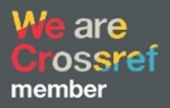VALUE ADDED ANALYSIS OF WATER HYACINTH BAGS AS REGIONAL FEATURED PRODUCT
DOI:
https://doi.org/10.51804/tesj.v2i2.279.115-118Keywords:
enceng gondok bags, hayami method, value addedAbstract
Research has a purpose and direction to maximize the value of water hyacinth. The condition of water hyacinth which has a high growth speed so that this plant is considered as a weed that can damage the aquatic environment. Water hyacinth is easily spread through water channels to other water locations, so the growth of water hyacinth can develop rapidly. So far, water hyacinth has become a problem for the community, because the presence of water hyacinth is not smooth, reservoirs and swamps are dirty. One of the processed products of water hyacinth is the bag. Thereforethe implementation of research leads to an analysis of the added value (added value) of water hyacinth into the water hyacinth bag. This study uses the Hayami method and descriptive analysis. The use of descriptive analysis to obtain data about raw materials and the use of additional materials to produce water hyacinth bags, then the results go to the value-added analysis with the Hayami method. The results of this study indicate that the added value (added value) obtained from the processing of water hyacinth into the water hyacinth bag in Ghandis Craft is Rp. 10,000/kg or IDR. 50,000/product, with a ratio of value added to the output value of 50% which has a value of greather than or equal to 40% so that it has a high value-added category with a workforce income of 53,333%, the contribution of other inputs 33,333%, and the profit of entrepreneurs is 13,333%. Whereas in R & D Handicraft is IDR. 8,000/kg or IDR. 40,000/product, with a ratio of value added to the output value of 44,444% which has a value of greather than or equal to 40% so that it has a high value-added category with a workforce income of 53,846%, the contribution of other inputs 38,462%, and the entrepreneur's profit of 7,692%. Therefore, the manufacture of water hyacinth bag products provides high added value because of more than 40%.
References
Arifien, K. (2011). Peluang Bisnis Anyaman Panduan Usaha Mandiri. Bandung: Yrama Widya.
Hidayat, A. (2012). Analisis Kepuasan Mahasiswa terhadap Proses Belajar Mengajar Di Jurusan Kemaritiman Politeknik Negeri Samarinda. JURNAL EKSIS, 8(1), 2060 2065.
Hubeis, M. (1997). Menuju industri kecil profesional di era globalisasi melalui pemberdayaan manajemen industri.
Kawagoe, T., Morooka, Y., & Siregar, M. (1987). Agricultural marketing and processing in Upland Java: a perspective from a Sunda village.
Sudiyono, A. (2002). Pengantar Pemasaran Pertanian. Fakultas Pertanian, Universitas Muhammadiyah Malang.
Suprapto. (2006). Proses Pengolahan Dan Nilai Tambah. Jakarta: Penebar Swadaya.
Syarif, H., Marimin, S. A., & Sukardi, Y. M. (2012). Modifikasi metode hayami untuk perhitungan nilai tambah pada rantai pasok industri kelapa sawit. Jurnal Teknologi Industri Pertanian, 22(1), 22–31.
Trienekens, J. H. (2011). Agricultural value chains in developing countries; A framework for analysis. International Food and Agribusiness Management Review, 14(2), 51–83.
Yujiro, H. (1987). The Value Added Method Through. Retrieved from http://community.gunadarma.ac.id/user/blogs/view/yudhistira/id_7389/title_%22-inputproses-output-usaha-business%22/
Downloads
Published
Issue
Section
License
With the receipt of the article by TESJ Editorial Board and the decision to be published, the copyright regarding the article will be transferred to TESJ. The copyright transfer form can be downloaded here.
TESJ has the right to multiply and distribute the article, and every author is not allowed to publish the same article published in this journal.

Teknika: Engineering and Sains Journal is licensed under a Creative Commons Attribution 4.0 International License.
Under the following terms:
Attribution — You must give appropriate credit, provide a link to the license, and indicate if changes were made. You may do so in any reasonable manner, but not in any way that suggests the licensor endorses you or your use.
.jpg)


